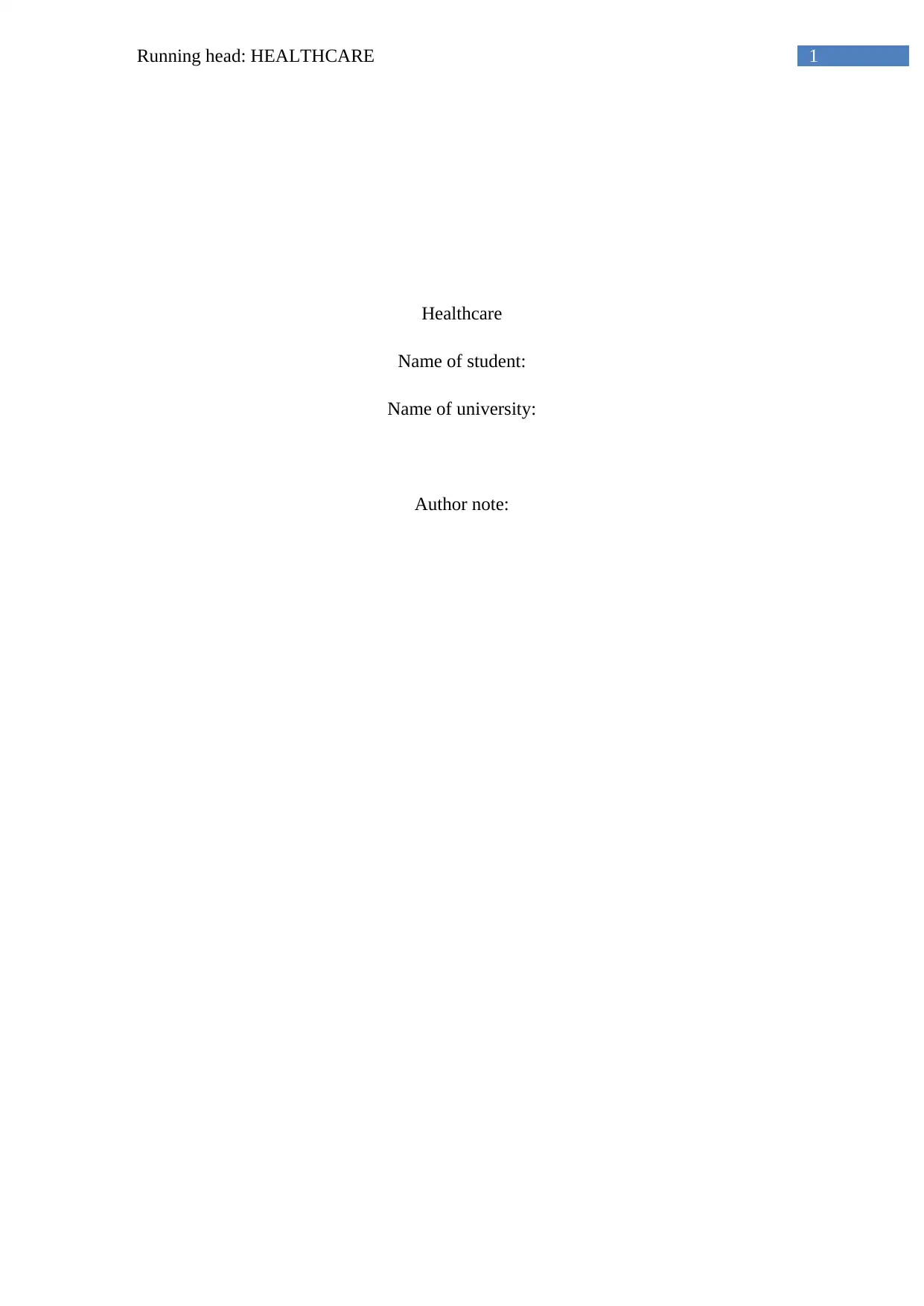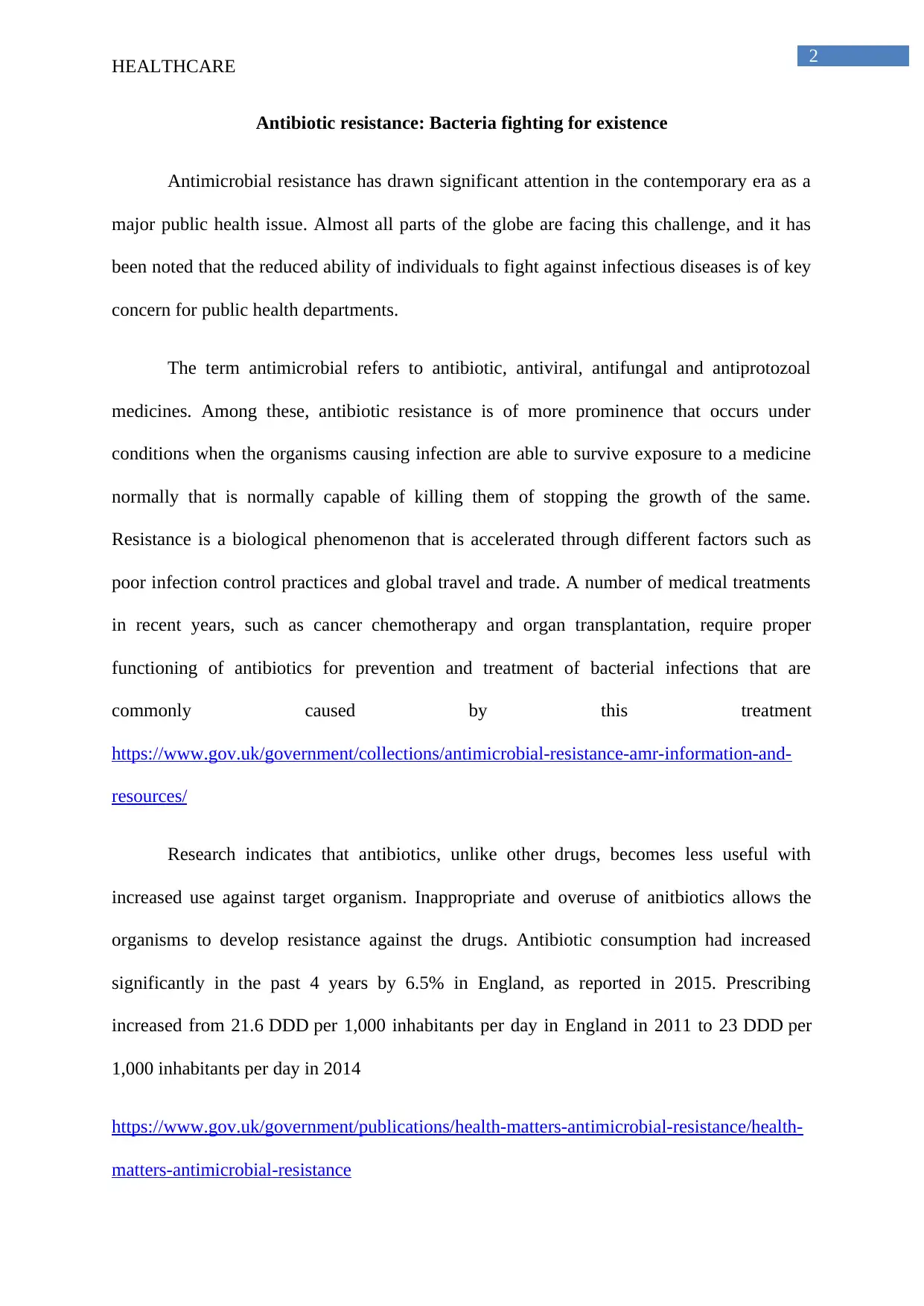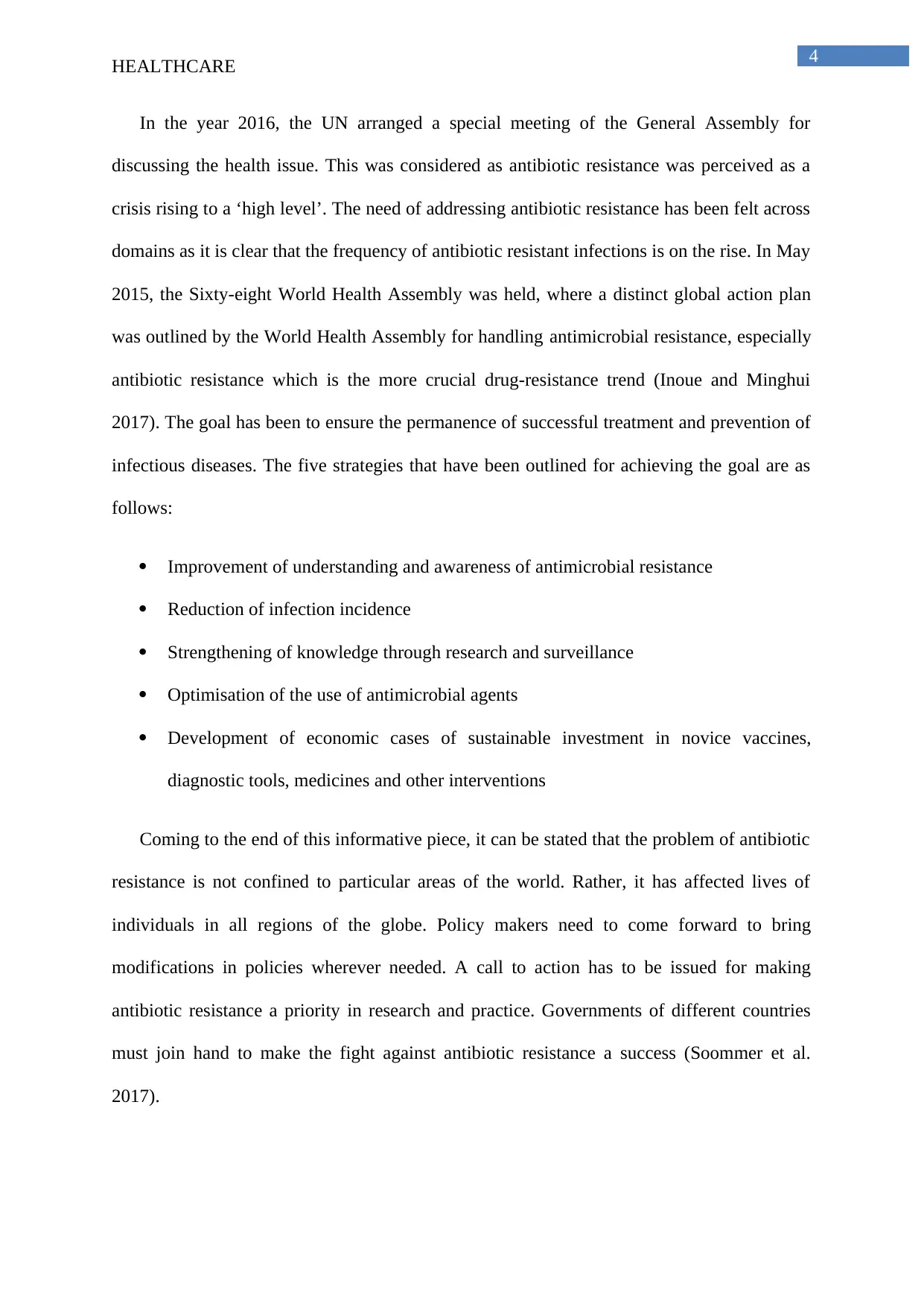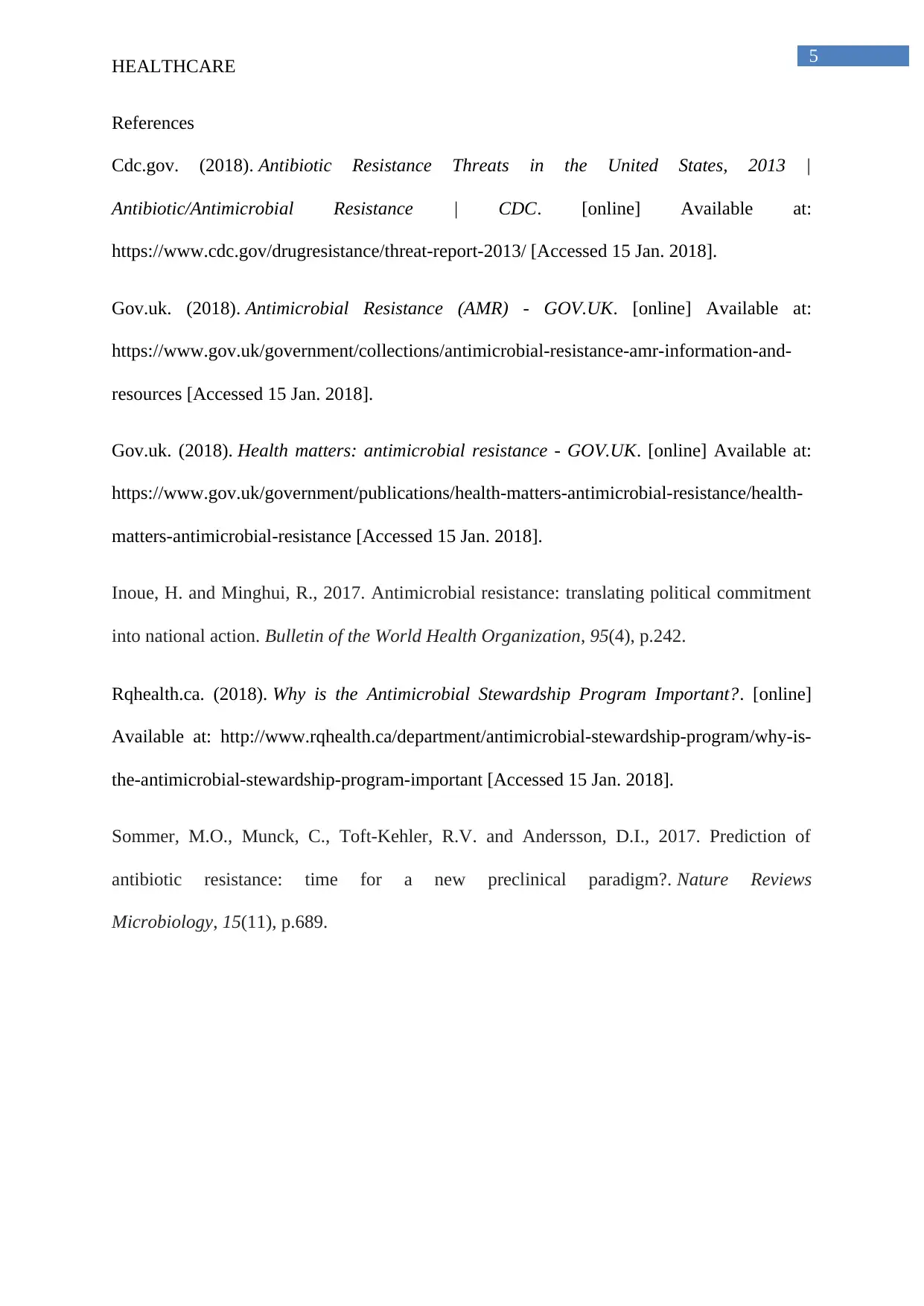Healthcare Report: Understanding and Addressing Antibiotic Resistance
VerifiedAdded on 2020/05/28
|5
|861
|41
Report
AI Summary
This report delves into the critical issue of antibiotic resistance in healthcare, highlighting it as a major public health concern with global implications. It defines antimicrobial resistance, focusing on antibiotic resistance and the factors accelerating its spread, such as poor infection control and global travel. The report references increasing antibiotic consumption and illustrates the process of antibiotic resistance. It emphasizes the need for global action, referencing the UN's special meeting on the topic and the World Health Assembly's global action plan. The report outlines strategies for addressing antibiotic resistance, including improving awareness, reducing infections, strengthening research, optimizing antimicrobial use, and developing economic incentives for new interventions. It concludes by stressing the need for policy changes and collaborative efforts to combat this pervasive threat, urging governments to prioritize research and practice in addressing antibiotic resistance.
1 out of 5











![[object Object]](/_next/static/media/star-bottom.7253800d.svg)